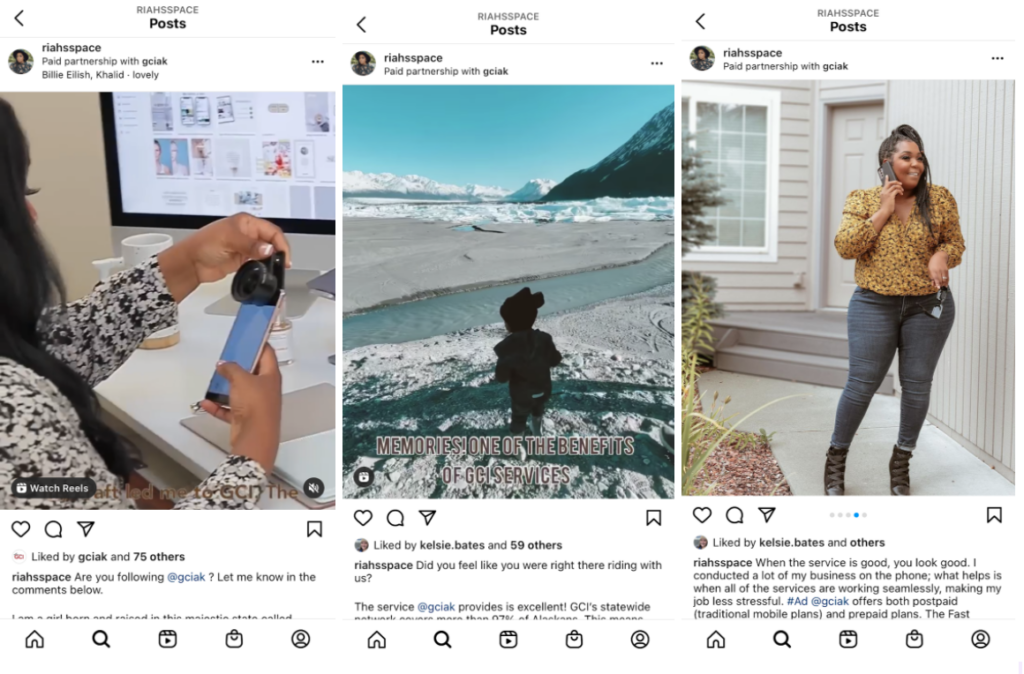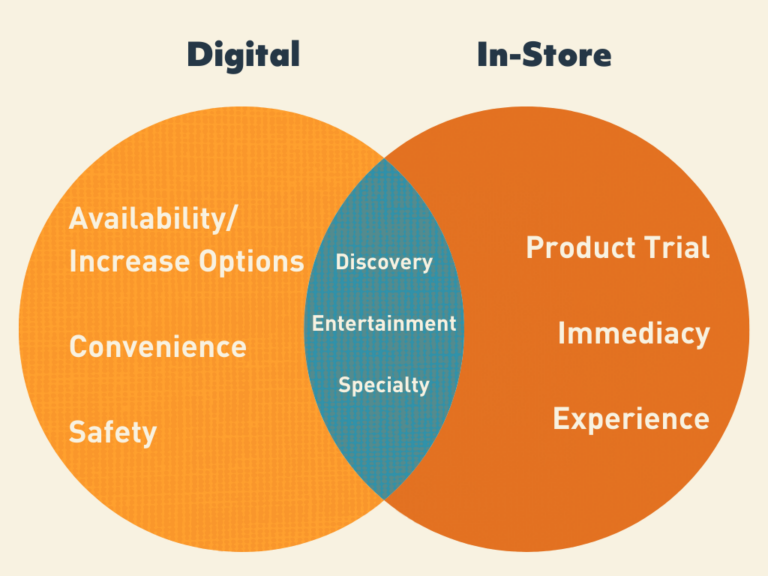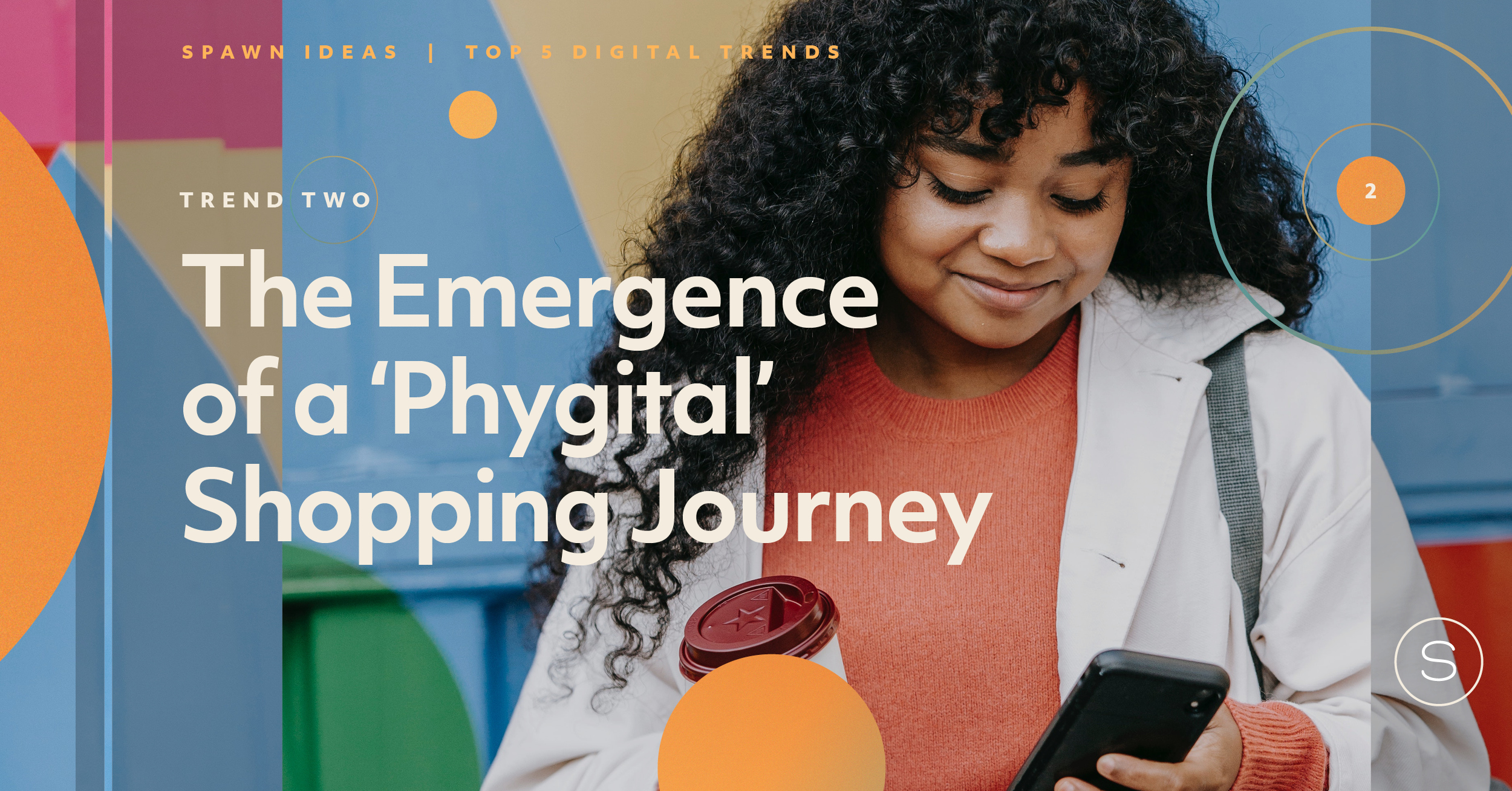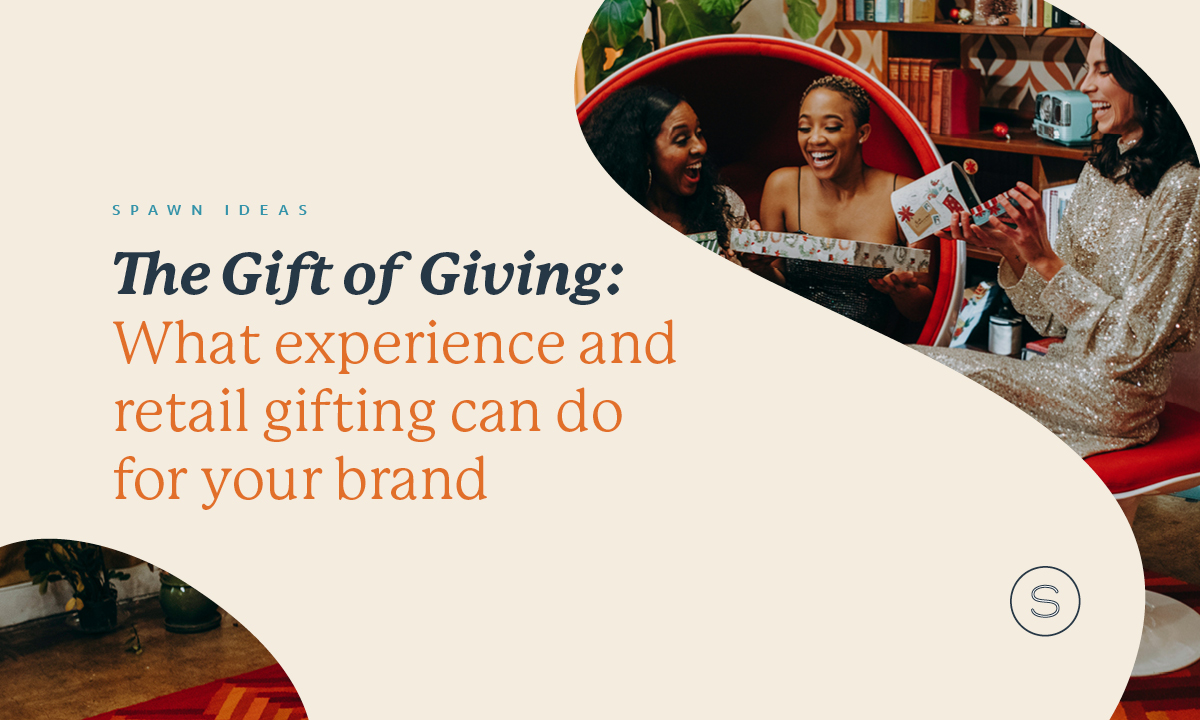Brick and mortar retail stores and malls were once the places where you would browse, explore and shop. You then went online to quickly look up some additional details, maybe find a color you didn’t see in store, and make a quick purchase. You spent time in the physical store, while your online journey was purpose-driven and transactional. However, the pandemic, as you can imagine, has accelerated the evolution of online shopping and we’re seeing the roles of digital and physical stores reverse. Over the last year and a half, in-person shopping has become more intentional and specific – you want to get in and get out, and you know why you came. The goal is to avoid people at all costs, right? Digital, however, is now the new “window shopping,” where daily exploration and discovery are brought to the palm of your hand. Furthermore, due to its convenience and safety, it’s become a preferred channel, especially amongst digitally-savvy younger generations.
However, as we enter 2022 and, fingers crossed, emerge from this pandemic, will this role reversal hold? Continue on this trajectory until we see the death of brick-and-mortar as we know it? After all, we’re all digitally savvy now and nearly everything can be ordered online.
Or – spoiler alert, this is our prediction – will we see the emergence of a new “phygital” shopping journey? Where the digital space continues to offer convenience, options, and personalization; and physical stores, especially local small businesses, have an opportunity to hold their own and capture the windfall of our collective pent-up yearning for physical connection and community that we’ve discovered the internet can never offer us. To fully take advantage of “The Roaring 2020s” (1) (or, so they’ve been foretold), e-commerce and brick-and-mortar each will want to take advice from the other in order to deliver customers the best of both worlds, which is what we’ve now come to expect.
Retail Landscape Today
Online Shopping
Over 75% of adult Americans shop online. Of those shoppers, 57% of those shopped at least once a month (2) – and that number is expected to grow.
Online shopping was built on the core benefits to customers of availability and convenience. Today, we are seeing added value for safety, discovery, and entertainment.
- Availability: access to products and solutions otherwise unavailable in your area
- Convenience: ability to shop at the hours, and moments that fit your schedule, at the location for your choice
- Safety: mitigation of risk to exposure and illness
- Discovery: introduction to new products and brands that fit your lifestyle
- Entertainment: gratification of shopping to pass time
Discovery and entertainment brought on by online shopping have exploded, thanks in part to the popularity of social media and social influencers.
Social media has now evolved to incorporate shopping both in an organic and paid advertising capacity. Influencers, followed by those with similar interests, offer a curated shopping experience, bringing new ideas for brands and products to those who check in with them daily. This provides a level of personalization that was not possible in a traditional brick and mortar shopping experience. Furthermore, social influencers with loyal followers and a reputable and authentic social media presence, provide an endorsement for brands – helping to score immediate credibility which increases the likelihood of purchase from new customers.
Brand example: GCI

A regional telecom provider successfully used influencer marketing to drive retail sales and subscriber growth. They chose a local influencer @Riahsspace whose fan following loves her content around home decor, style, and parenting. By aligning GCI’s brand with Riah’s personal brand, the telecom provider was able to increase discovery for their devices and accessories.
In-Store Shopping
In contrast to online shopping, the core benefits of brick and mortar stores today are centered around: product trial, immediacy, and experience. (3)
- Product trial: the ability to touch/feel/experience the product in-person
- Immediacy: ability to purchase and use immediately rather than waiting for delivery
- Experience: opportunity to participate with the brand in an engaging way
Immediacy…shoppers have the need, the need for speed. While online retailers (ahem, we’re looking at you, Amazon) have exponentially increased the expectation for super-fast delivery, more often than not, an in-store pick up will be faster than an online order. Covid, however, changed the in-store quick shop to an even more immediate and intentional pick up. And with all things in 2021, you can further personalize the experience – curbside or in-store.
This convenience of online ordering and in-store pick up has the most application and adoption dependent on category. Routine purchases like household goods and groceries are prime examples of retailers who have evolved their shopping experiences for the better. The ability to check before you shop, thanks to large retailers like Target, will further shape customers’ expectation for inventory visibility.
While there has been great improvement for online retailers to help show and/or explain the product details and features (think product videos, close up photos, and user-generated reviews) – it still can’t completely replace the accuracy of seeing a product up close and in person. The experience aspect of in-store shopping has always been a core benefit, and given the pandemic’s effect of exasperating our collective digital fatigue, expect to see a pent-up demand for in-store entertainment.
Coming Soon to Brick-and-Mortar: "The Roaring 2020s"

While it seems this role reversal would mean the death of physical retail space (surely we don’t need all those aisles for curbside pickup…), the numbers tell us differently. Surely certain industries (hello home improvement!) and markets with limited job losses have performed better than others (4), but overall this sector is holding steady. Brick-and-mortar sales grew at an annualized 3% rate since 2016 and have risen a more robust 6.5% over the past 12 months.(5) E-commerce has taken a larger share of the growing pie, but the pie is still growing for all. In fact, we’re seeing consolidation, with big box stores (think Walmart & Target) taking the traffic, and therefore the retailer-within-a-retailer opportunities that malls once had (think Apple and Disney stores inside Target). It seems these box stores are now becoming, essentially, a physical representation of the online experience. Yes, there are aisles to browse with some of the merchandise, I can sample the makeup before I buy, but really it’s still a place where I’ll be able to make that very transactional interaction.
But, as we emerge from the pandemic, as it becomes safe to be around humans and we’re ready to blink and leave our blue screens, we’re going to want more than a transactional interaction. Barry Fiske in a Perspective for Digital Commerce 360 says “The pandemic and its many effects on customers is the engine that’s about to bring brick-and-mortar stores roaring back.”(1) We’re tired of being behind our screens. We miss interacting with people in person and shopping as a way to spend time with friends, try/taste/smell/feel, and see holiday window displays for goodness sake. The National Retail Federation anticipates retail sales will grow 8.2% in 2021, and this is predicted to continue to increase. The period we’re about to enter has been coined “The Roaring 2020s” with a predicted increase in activities that bring us together, shopping included. Even younger generations, who were born with social media and the world of e-commerce at their fingertips, are yearning for a break.” Despite being the first full generation of digital natives, Gen Z is looking at brick and mortar retailing as a way to ‘disconnect’ from the stress of social media.”(6) Fiske names all of this the “welcome back opportunity,” but notes that the returning in-person customers are not the same as they once were.
While we’re fatigued from having to shop online, we can certainly appreciate the pros as mentioned previously (convenience, availability of options, personalization, etc.), and we now expect these same benefits when we return in-store. At the same time, brick-and-mortar retailers, especially local small businesses have the opportunity to capitalize on aspects that can never be offered online.
How Physical Retailers Can Capitalize
- Maintain a sophisticated digital presence. It’s 2022. Just because you’re a small business doesn’t mean you can’t have the same online presence as e-commerce retailers. And you must! Brick-and-mortar is still here, but e-commerce will continue to grow and you’re leaving customers (and money) on the table if you’re not equipped. From your website, to your social media, to a sophisticated paid and organic search strategy – you need to make sure you’re meeting customers throughout their purchase journey online. In fact, it was through a sophisticated website presence that helped a small Fairbanks, AK fabric store Northern Threads stay open and even grow amidst the pandemic. Despite orders to “hunker down” locally, the store employees stayed busy, filling orders from all across the world due to an extensive online catalog of every fabric and notion in the store, rare for this sort of retailer. This, along with a more unique selection and a pivot to Zoom classes, enabled this small fabric store to compete with national retailers like JoAnn Fabrics.
- Offer a well-curated experience. If the digital space is all about endless options, the physical space is about a specially selected product mix, chosen and displayed to speak to me (or the retailer’s) personal tastes. For example, the “for the rugged hunter” vs “for the rugged fisher” vs “for the rugged camper” sections at your favorite outdoor retailer. Or the shiny accessories displays, artfully arranged to encourage you to spend money on the brand new phone you just purchased. Or that gallery you trust to showcase your next favorite piece of art.
- Highlight new products for discovery and trial. For example, new releases are debuted in-store first. In-person still does this best, and everyone loves free samples and early access!
- Offer technology that enhances the in-person experience.
a. Make Wi-Fi available for customers
b. Lessen time in line with self-checkout, kiosks, reps with tablets
c. For larger retailers, digital kiosks and/or maps can make the physical space just as easy to navigate as the digital one
d. Integrate with online via QR codes for more (e.g. links to artists’ Etsy store or product reviews) - Reward in-person shoppers. They made the trek and value your service, can you offer them special discounts/promotions, giveaways or products only available in-store?
- Customer service is everything and is an expectation of the in-store experience. It’s the prompt and personalized service that will set you apart from digital. And don’t mess this up. Customers aren’t as loyal as they once were, and you now have even more digital competitors than before.
- Build an offline community. This is the bookstore “staff picks” example, the community message boards, the partnership with the food bank or fundraiser for the local Girl Scout troop.
- To compete with the big guys: think small. Regardless of what city or town your business is located in, you’ll be hard-pressed to find a customer who isn’t ready and willing to support locals. Seek out opportunities where you can sell products made by small businesses in your area. This will serve dual benefits: giving you a product that is exclusive (or nearly) to your area, and provides a positive brand life and sentiment of supporting your community in a way the national guys can’t replicate.
- Design relevant shopping experiences by considering an evolved customer journey. You know your product and customers better than anyone. So a simple, yet profoundly effective first step is to draw out 2-3 common customer journeys. Consider a need-based journey vs. a discovery journey. Map out the steps one might take from consideration to purchase – and remove hurdles and add benefits along the way.
- Advance your advertising. Meet shoppers today where they are shopping – which spans physical and digital places. Not only promote your products or services, but also the DELIVERY of those services and how they address and solve for the evolving needs of shoppers today.
The more things change, the more they stay the same. With some thoughtful, pragmatic steps – your brand can compete with the big guys by tailoring a shopping experience for both the digital and physical worlds. If you get stuck, reach out to Michelle or Kaylee…we’re happy to grab a cup of coffee (online or IRL) to hash out an action plan.
Stay smart, stay safe. Please vaccinate. Thank your healthcare workers.
Works Cited
- Fiske, Barry. “The pandemic destroyed brick-and-mortar. Now it’s bringing stores back.” Digital Commerce 360, Apr. 22, 2021, https://www.digitalcommerce360.com/2021/04/22/the-pandemic-destroyed-brick-and-mortar-now-its-bringing-stores-back/. Accessed Sept. 2021.
- Barber, Robin. “Online Shopping Statistics & Trends in 2021.” Cloudwards, Sept. 20, 2021, https://www.cloudwards.net/online-shopping-statistics/#Sources. Accessed Sept. 2021.
- Sastri, Suchi. “How to be ready for holiday shoppers this year.” Think with Google, Sept. 2021, https://www.thinkwithgoogle.com/consumer-insights/consumer-trends/2021-holiday-marketing-tips/. Accessed Sept. 2021
- Meisenzahl, Mary. “The pandemic might have saved brick-and-mortar shopping as restrictions lift and customers head back to stores.” Business Insider, May 22, 2021, https://www.businessinsider.com/pandemic-saved-brick-and-mortar-stores-walmart-and-target-2021-5. Accessed Sept. 2021.
- Schnure, Calvin. “Brick-And-Mortar Retail Is Bouncing Back.” Forbes, Mar. 18, 2021, https://www.forbes.com/sites/calvinschnure/2021/03/18/brick-and-mortar-retail-is-bouncing-back/?sh=1c72b4f5d0f4. Accessed Sept. 2021.
- Wu, Jasmine. “Gen Z shopping habits can fuel a brick-and-mortar resurgence, report says.” CNBC, Sept. 17, 2021, https://www.cnbc.com/2019/09/17/gen-z-shopping-habits-can-fuel-a-brick-and-mortar-resurgence-report-says.html. Accessed Sept. 2021.





